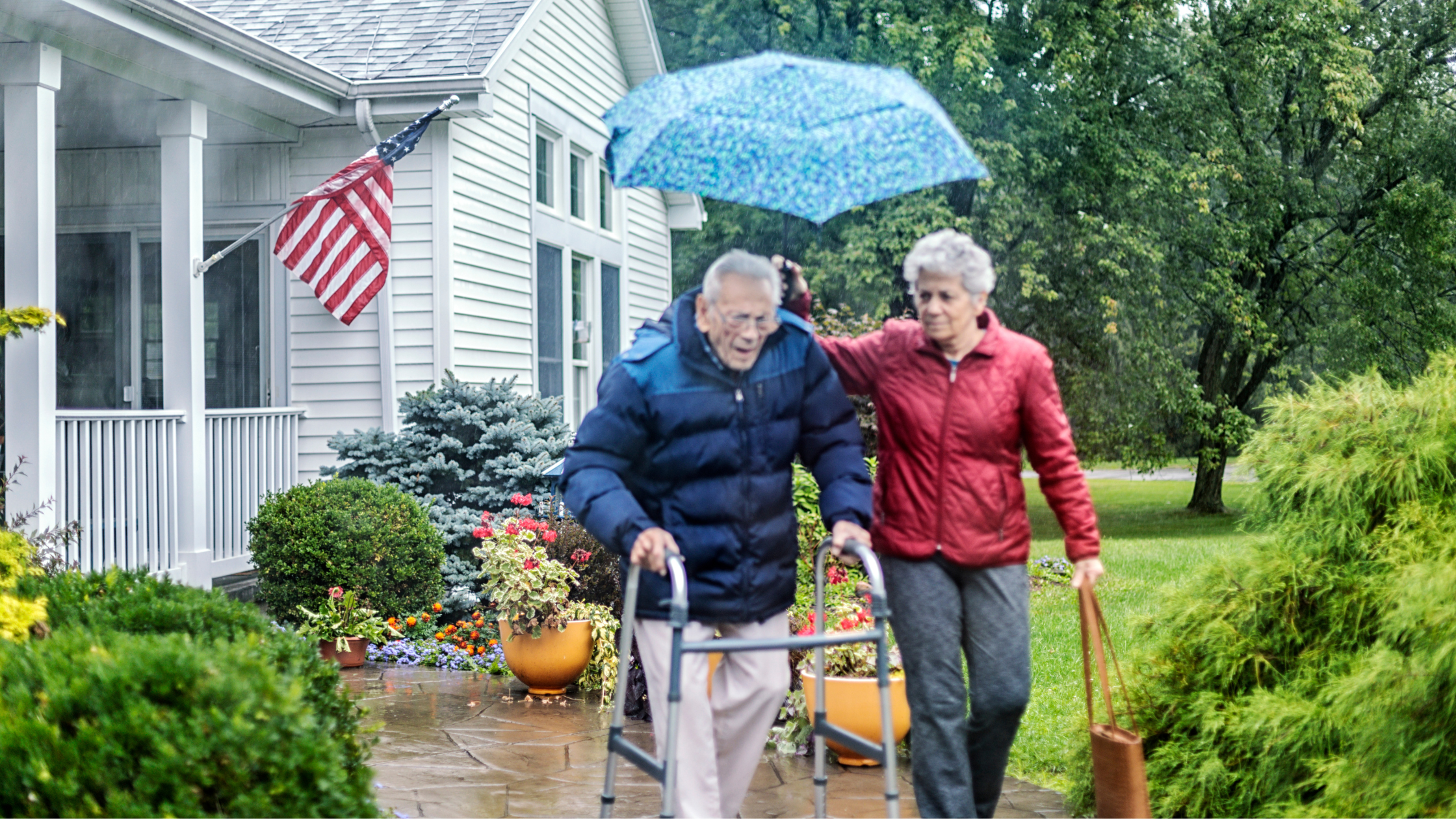In 2019, the U.S. reported a population of 54.1 million people age 65 or older (the most recent year for which data is available). They represented 16% of the population–more than one in every seven Americans. Older adults consistently experience the most significant percentage of loss during and after natural disasters compared to younger age groups (Fernandez, Byard, Lin, Benson, & Barbera, 2002; Mokdad, 2005).
Thankfully, there are things you can do to be prepared, respond safely, and help speed your recovery. Following are some tips about what to do before, during, and after a disaster or emergency.
BEFORE: Prepare and Get Ready Now
Get Informed
- Identify Likely Disasters: Know the types of disasters that could occur in your community.
- Learn About Community Response Plans: Find out about local plans for emergency alerts, evacuation, and shelter resources.
- Sign up for alerts and warnings to receive information during an emergency.
- Get Trained: Learn first aid, CPR, and the specific actions that can save your life for each type of disaster likely in your area.
Assess Your Needs
- Understand how your medical, physical, and cognitive needs may affect your ability to respond to a disaster or emergency.
- Think About How You Would Respond: Consider your possible needs if the power went out, you had to stay home for 2+ weeks, or if you had to evacuate your home or community.
- Talk about the help you may need and who could help you.
Build Your Support Network
- Identify Helpers: Include family, friends, neighbors, caregivers, and care providers to build your network of people who may assist you or that you can assist.
- Meet with your helpers to assess your needs and plan together.
- Plan how you’ll communicate with helpers.
NOW: Prepare Before the Disaster
Review, practice, and refresh your plan, supplies, and essential documents every six months.
Develop Your Plan
- Plan to Stay or Go: Plan to stay home for at least two weeks or evacuate.
- Help Evacuating: If you need help evacuating, plan who will help you. Find out if there are local registries, and sign up.
- Power Needs: If you require power to operate medical devices or keep medicines cold, make a backup plan.
- Fire Safety: Identify two ways out of every room to escape a home fire, and plan for the help you may need.
- Property or Renter’s Insurance: Make sure you have a policy that meets your property and disaster coverage needs.
Create a Communication Plan
- Make an emergency contact list and plan how you’ll reach your support group and important emergency contacts if regular communications are disrupted.
Gather Your Supplies
- Get Basic Emergency Supplies: Use a checklist to prepare what you’ll need in your home, car or when you evacuate.
- Manage Medical and Personal Needs: Keep at least 30 days of medications and extra assistive items, such as a cane or eyeglasses. Plan for your food needs if you follow a special diet.
- Get batteries to back-up power dependent devices.
Prepare Key Documents
- Locate Important Documents: Collect and copy documents, including identifications and financial, legal and medical papers you’ll need to help you recover.
- Keep an Up-to-Date List of Medical Information: conditions, allergies, medications, prescription records, doctors, and insurance cards.
DURING: Know How to Respond
When There Is a Disaster
- Stay Informed: Monitor the news and emergency alerts for updates and guidance.
- Stay or Go? Be ready to stay at home or leave immediately. Know how you’ll decide and who will help.
- Ask for Help: Tell people what you need.
AFTER: Know How to Recover
When the Disaster Is Over
- Let friends and family know you’re safe. Start with your contact list and share where you’re staying and how to reach you.
- Return Home Safely: Wait until authorities say it’s safe to return.
- Work With Trusted Sources: The American Red Cross, FEMA, your local government, and your support network can help. Beware of scams.
- Manage Property Damage: Document any property damage for insurance, and work with others to remove debris and clean safely.
Find this information and other disaster resources at www.redcross.org/OlderAdults.
Lone Star Legal Aid (LSLA) is a 501(c)(3) nonprofit law firm focused on advocacy for low-income and underserved populations by providing free legal education, advice, and representation. LSLA serves millions of people at 125% of federal poverty guidelines, who live in 72 counties in the eastern and Gulf Coast regions of Texas, and 4 counties in Southwest Arkansas. LSLA focuses its resources on maintaining, enhancing, and protecting income and economic stability; preserving housing; improving outcomes for children; establishing and sustaining family safety, stability, health, and wellbeing; and assisting populations with special vulnerabilities, like those with disabilities, the aging, survivors of crime and disasters, the unemployed and underemployed, the unhoused, those with limited English language skills, and the LGBTQIA+ community. To learn more about Lone Star Legal Aid, visit our website at www.LoneStarLegal.org.
Media contact: media@lonestarlegal.org
